Post by andreasfleischmann on Aug 24, 2009 21:28:28 GMT
Drosera ramentacea is a rare sundew species of the fynbos vegetation of the south-western Western Cape region of South Africa. “Fynbos” means “fine bush” and refers to the dry scrubland vegetation type common to the Cape area, which mainly consists of small shrubs with thin, needle like leaves, or sclerophyllous foliage (heath lands comparable to the “macchia”, “phrygana” or “garrigue” of the Mediterranean). This sundew does not form large colonies, but grows scattered as single plants or in groups of few plants only. Maybe one of the most elusive Drosera species we found in the Cape area.

Typical costal fynbos habitat of D. ramentacea at the base of Table Mountain Nature Reserve.
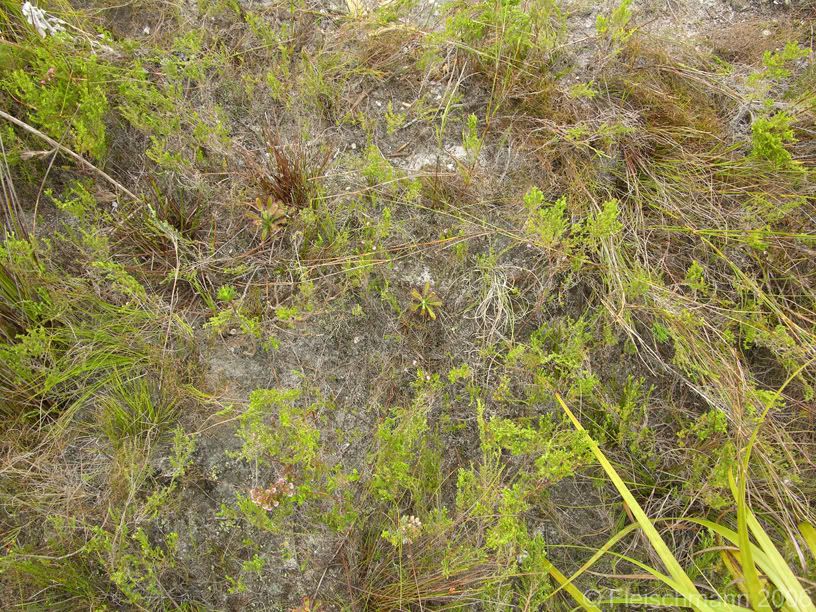
Can you spot the two plantlets of D. ramentacea amongst surrounding ericoid vegetation?
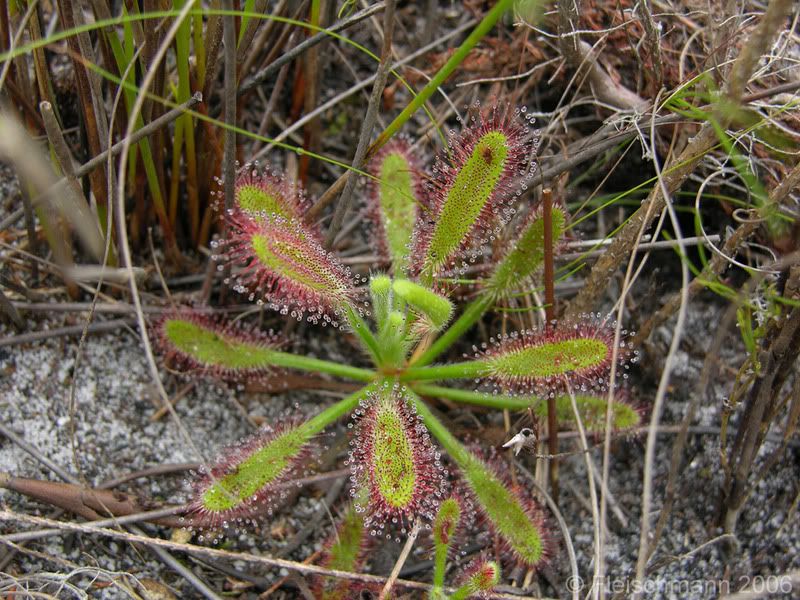
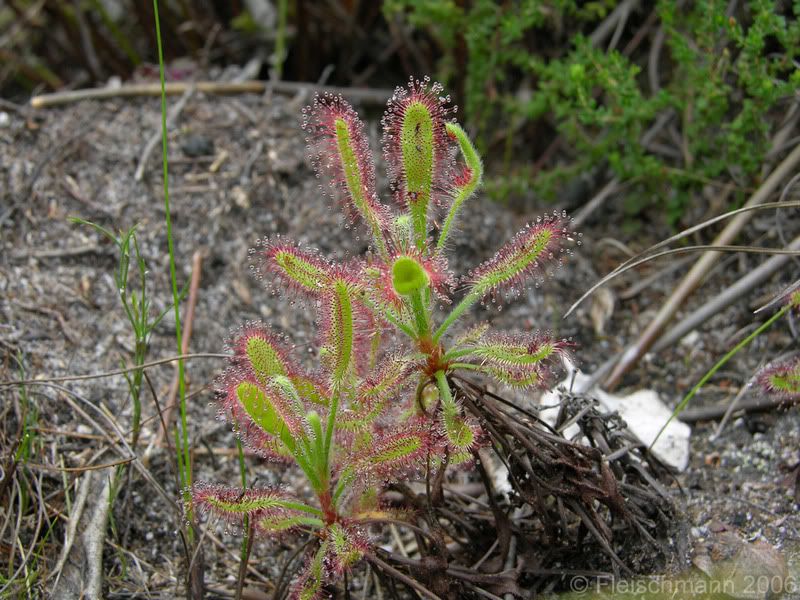
Drosera ramentacea is not a bog plant of soaking wet soils at all, but grows in rather dry, very sandy peat soils over white Table Mountain Sandstone. In September, when we visited some locations of this plant, the soil was very dry in the upper part, and started getting just moist from about 10 cm below the soil surface. D. ramentacea is well known for producing some of the longest tap roots of all sundews (and so do D. hilaris, D. cuneifolia and D. glabripes, which all grow in exactly the same type of habitat), reaching more than 50 cm in length, in order to reach the subsoil moisture in its natural habitats. Those of you who are successfully growing this species will perhaps agree that the roots of D. ramentacea are quickly reaching the bottom of even the tallest pots .
.
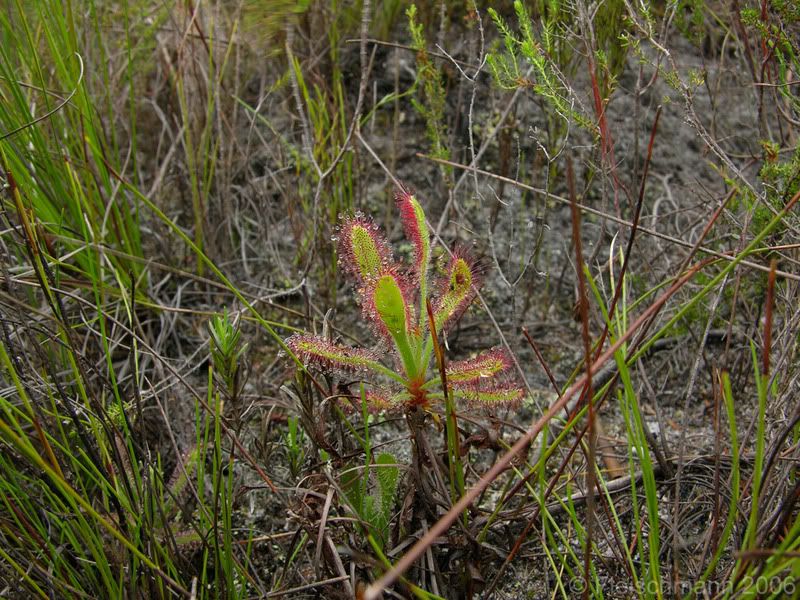
It is from those thick roots that the plant sprouts again after regular bush fires, or after years of exceptional drought. Note the little plantlet sprouting from the roots to the left of the main stem.
D. ramentacea is a winter growing, summer dormant sundew of the Cape area. However it is not fully dying back to its roots (like the geophyte D. cistiflora for example; plants which survive a dormancy as subterraneous organs are called “geophytes”), but forming a dense hairy resting bud at the top of its stem (comparable to the hibernacula of the temperate Drosera species). This bud is surviving the dry South African summer, and starts regrowth with the winter rainfall. Plants surviving a dormancy as resting bud are called “chasmophytes”. The same strategy is followed by the related species D. hilaris, D. ericgreenii and D. glabripes, all which are sommer dormant chasmophytes.
The plant can form tall stems up to 1 m in height (given support by nearby vegetation), however the plants are usually much smaller. We found a lot of old dead desiccated stems with fresh juvenile growth from the roots, most likely caused by some dry years.
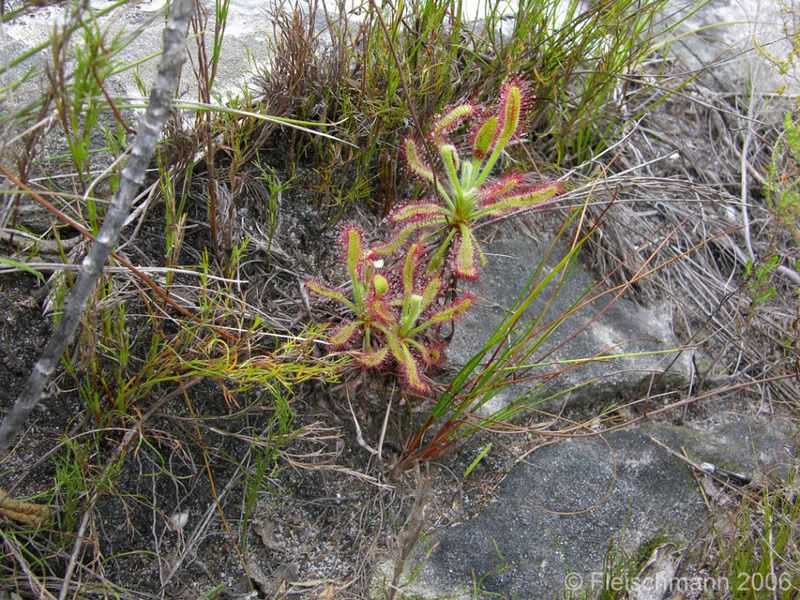
In the wild, D. ramentacea is often growing in the shelter of some shrub or rocks, and the roots are often formed right into rock cavities, where some moisture accumulates.
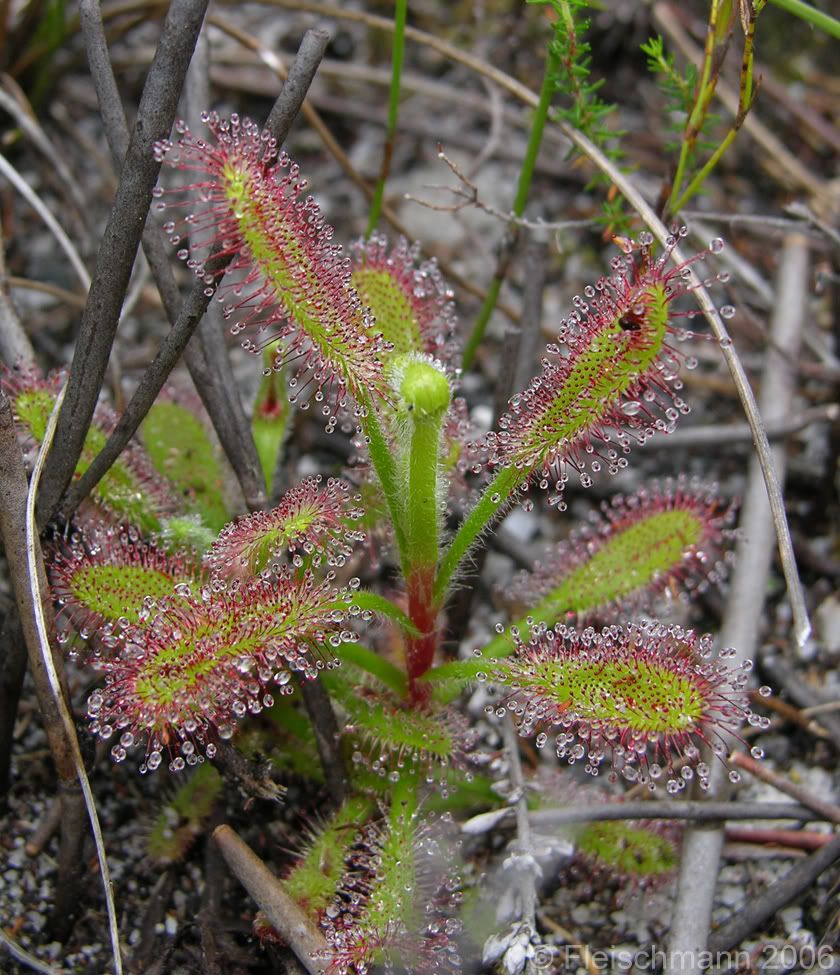
D. ramentacea can be easily told apart from D. capensis (a plant of wetter habitats; see different topic) by the presence of long, white hairs which are spreading from the petiole (hairs in D. capensis are much shorter and more or less appressed, and quite often deciduous, i.e. only present on young leaves).
Moreover, the lamina is wider but shorter than in all forms of D. capensis, and stipules of both species are different as well. In general, the scape of almost all individuals of D. ramentacea is dichotomously forked, whereas D. capensis has a simple raceme (which can, however, be forked in robust plants in cultivation. Especially plants of D. capensis from Baineskloof tend to have forked scapes)
All the best,
Andreas
PS:

Fernando sitting in typical fynbos habitat of D. ramentacea ( “Boooring! Olha como o cerrado em Brasil! “
 )
)

Typical costal fynbos habitat of D. ramentacea at the base of Table Mountain Nature Reserve.

Can you spot the two plantlets of D. ramentacea amongst surrounding ericoid vegetation?


Drosera ramentacea is not a bog plant of soaking wet soils at all, but grows in rather dry, very sandy peat soils over white Table Mountain Sandstone. In September, when we visited some locations of this plant, the soil was very dry in the upper part, and started getting just moist from about 10 cm below the soil surface. D. ramentacea is well known for producing some of the longest tap roots of all sundews (and so do D. hilaris, D. cuneifolia and D. glabripes, which all grow in exactly the same type of habitat), reaching more than 50 cm in length, in order to reach the subsoil moisture in its natural habitats. Those of you who are successfully growing this species will perhaps agree that the roots of D. ramentacea are quickly reaching the bottom of even the tallest pots
 .
.
It is from those thick roots that the plant sprouts again after regular bush fires, or after years of exceptional drought. Note the little plantlet sprouting from the roots to the left of the main stem.
D. ramentacea is a winter growing, summer dormant sundew of the Cape area. However it is not fully dying back to its roots (like the geophyte D. cistiflora for example; plants which survive a dormancy as subterraneous organs are called “geophytes”), but forming a dense hairy resting bud at the top of its stem (comparable to the hibernacula of the temperate Drosera species). This bud is surviving the dry South African summer, and starts regrowth with the winter rainfall. Plants surviving a dormancy as resting bud are called “chasmophytes”. The same strategy is followed by the related species D. hilaris, D. ericgreenii and D. glabripes, all which are sommer dormant chasmophytes.
The plant can form tall stems up to 1 m in height (given support by nearby vegetation), however the plants are usually much smaller. We found a lot of old dead desiccated stems with fresh juvenile growth from the roots, most likely caused by some dry years.

In the wild, D. ramentacea is often growing in the shelter of some shrub or rocks, and the roots are often formed right into rock cavities, where some moisture accumulates.

D. ramentacea can be easily told apart from D. capensis (a plant of wetter habitats; see different topic) by the presence of long, white hairs which are spreading from the petiole (hairs in D. capensis are much shorter and more or less appressed, and quite often deciduous, i.e. only present on young leaves).
Moreover, the lamina is wider but shorter than in all forms of D. capensis, and stipules of both species are different as well. In general, the scape of almost all individuals of D. ramentacea is dichotomously forked, whereas D. capensis has a simple raceme (which can, however, be forked in robust plants in cultivation. Especially plants of D. capensis from Baineskloof tend to have forked scapes)
All the best,
Andreas
PS:

Fernando sitting in typical fynbos habitat of D. ramentacea ( “Boooring! Olha como o cerrado em Brasil! “

 )
)





